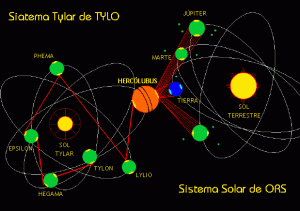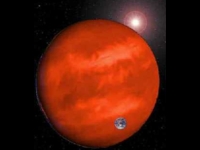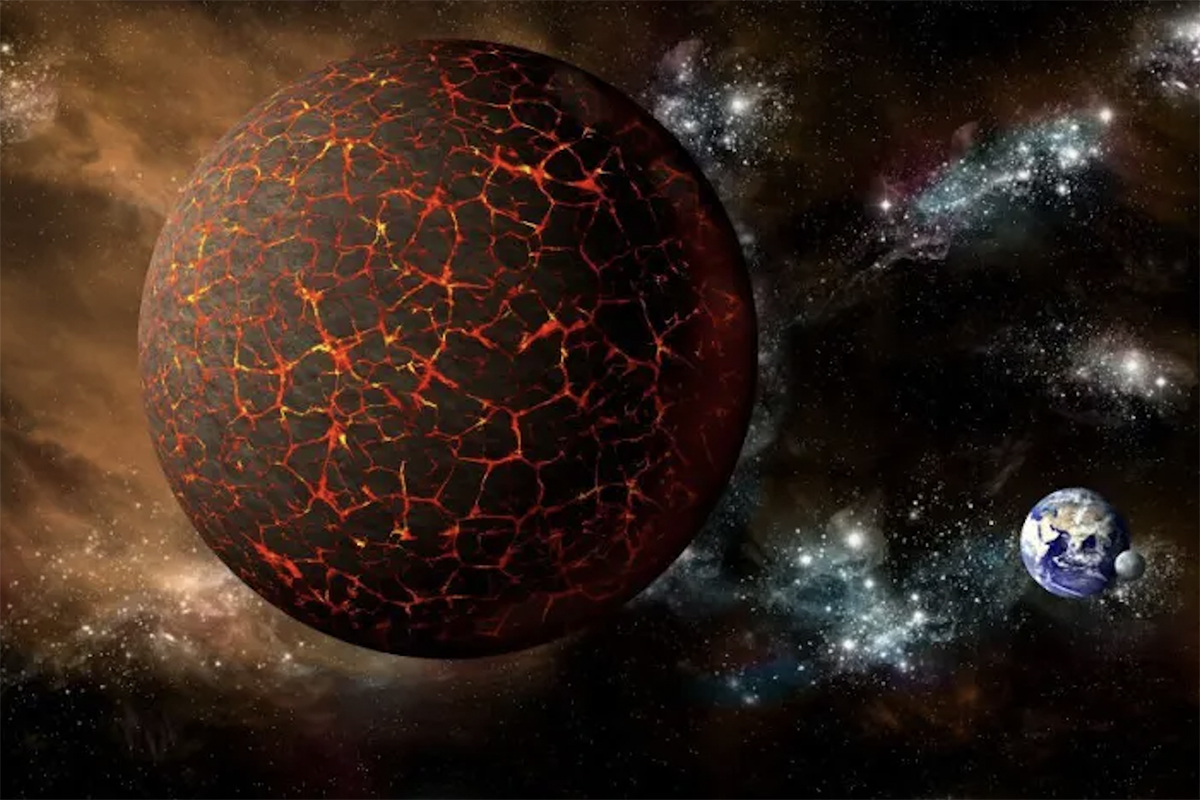Let's think a little. A giant planet that was approaching the Earth, in some versions cited for the year 1999, in others for 2005 (past tense), remaining between 10 million and 500,000 km from the Earth, would be perfectly visible from the Earth. Even without having celestial coordinates, a body 5-6 times larger than Jupiter would be very bright in the night sky. Being a gaseous planet, one would think that its atmosphere is probably composed of hydrogen and helium and has characteristics similar to a “quintupled” Jupiter; then its albedo would also be similar to that of Jupiter, and therefore it would reflect the light of the Sun with similar intensity; ergo, if Hercolubus were as close as Jupiter (which is about 778,000,000 km from the Sun), it would shine at a magnitude of -10, almost 3 times brighter than Venus.
 If it were about 10 million km away, its apparent size would be monstrous. Even if this planet were not noticeable in the visible range, it would be noticeable in the infrared, and it would be easily identified with the Spitzer space telescope and similar technologies on Earth.
If it were about 10 million km away, its apparent size would be monstrous. Even if this planet were not noticeable in the visible range, it would be noticeable in the infrared, and it would be easily identified with the Spitzer space telescope and similar technologies on Earth.
Secondly, we have the supposed solar system Tylo (also cited as Tylar). In the multiple references where Hercolubus is mentioned, there is not a single image that shows the precise location of this supposed system, from which the supposed Hercolubus could be observed as it approaches us, as well as the other 5 planets that would also orbit around it. this star. The only “astronomical map” of the Tylo system available is the one that appears next to this text; Logically, the only thing you see are the erratic orbits of a star that does not fit into any reference system: you don't know what type of star it is, what constellation it is in, its magnitude... nothing.
 Logically, in the absence of a minimal amount of evidence supporting the existence of said giant planet, there is no reason to assume that this theory is true. Apart from this, the available references in this regard are contradictory and none offer verifiable scientific data. However, after searching a little, there is a piece of information that can help us understand where this tremendous apocalyptic confusion came from: and that is that Hercolubus is not the only name by which this supposed giant planet is known; It is also known as Nibiru, Wormwood either Barnard I. Name Wormwood It appears in biblical scriptures, and refers to a star that causes a huge catastrophe on Earth. It is not the idea of this section (nor do I consider it useful) to go into polemicizing a religious text, therefore I will only focus on the second meaning, Barnard I, which is actually more useful because it very possibly represents the origin of the Hercolubus myth.
Logically, in the absence of a minimal amount of evidence supporting the existence of said giant planet, there is no reason to assume that this theory is true. Apart from this, the available references in this regard are contradictory and none offer verifiable scientific data. However, after searching a little, there is a piece of information that can help us understand where this tremendous apocalyptic confusion came from: and that is that Hercolubus is not the only name by which this supposed giant planet is known; It is also known as Nibiru, Wormwood either Barnard I. Name Wormwood It appears in biblical scriptures, and refers to a star that causes a huge catastrophe on Earth. It is not the idea of this section (nor do I consider it useful) to go into polemicizing a religious text, therefore I will only focus on the second meaning, Barnard I, which is actually more useful because it very possibly represents the origin of the Hercolubus myth.
Barnard Star… the origin of the myth?
 Barnard I (also called Barnard's Star) is a red dwarf star in the constellation Ophiuchus. It was discovered by astronomer Edward E. Barnard, and is a rather curious object in astronomy for two simple reasons: 1) it is the 2nd closest star to us (it is 5.9 light years away) after the Alpha Centauri triple system. (4.3 light years) and 2), is the star with the greatest apparent motion from Earth (10.29 arc seconds); It moves very quickly at about 105 km/s in our direction, so it is expected that in about 8,000 years it will be 3.8 light years away and become the closest star to us, surpassing the Alpha CEN system.
Barnard I (also called Barnard's Star) is a red dwarf star in the constellation Ophiuchus. It was discovered by astronomer Edward E. Barnard, and is a rather curious object in astronomy for two simple reasons: 1) it is the 2nd closest star to us (it is 5.9 light years away) after the Alpha Centauri triple system. (4.3 light years) and 2), is the star with the greatest apparent motion from Earth (10.29 arc seconds); It moves very quickly at about 105 km/s in our direction, so it is expected that in about 8,000 years it will be 3.8 light years away and become the closest star to us, surpassing the Alpha CEN system.
It is barely larger than Jupiter and has a magnitude of +9.5, so you need a telescope to see it. Due to a quality of red dwarf stars, their chemical reactions cause them to emit very little light and are objects only visible to the telescope (this could be where Hercolubus is “invisible” or is also known as a “red planet”).
In short, this is another of those typical cases in which a false astronomical event is intended to be used to announce a supposed catastrophe on Earth; based on the absence of verifiable data, although more likely a disguised villain presentation of the Barnard star. To have reliable information about real objects near us, I recommend visiting the website of the Near Earth Objects (NEO) program: http://neo.jpl.nasa.gov.


